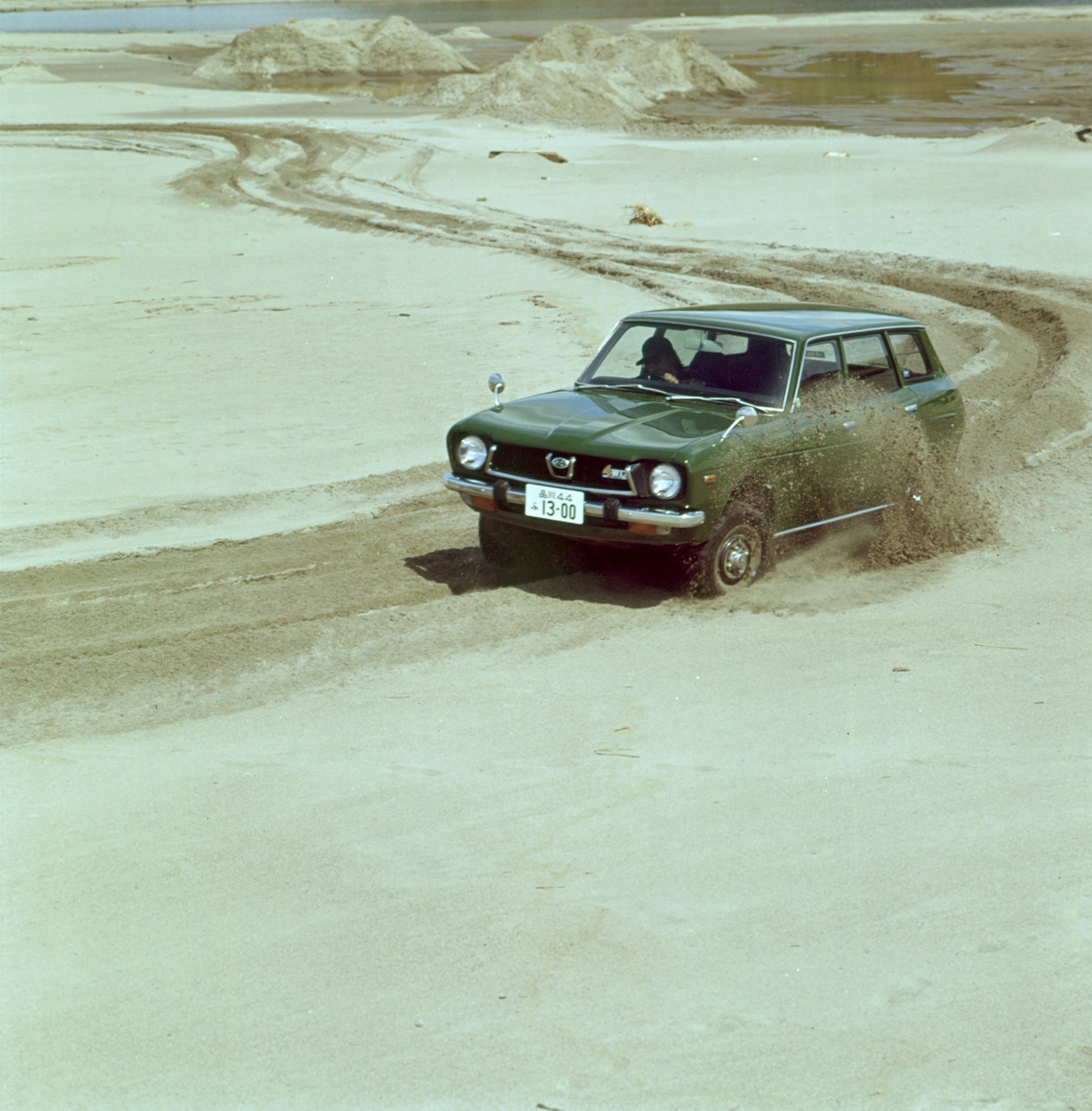The most distinctive feature of Subaru's Symmetrical AWD is a symmetrically laid out drivetrain paired with a longitudinally mounted Boxer engine positioned in line with it. The combination of the low center of gravity provided by the Boxer engine and the superior weight balance of the symmetrical drivetrain maximizes stability and traction intrinsic to All-Wheel Drive, offering superb driving performance in a variety of weather and road conditions.
In addition to these hardware advantages, Subaru has been continuously honing its AWD capability under the philosophy of "human-oriented car making," to deliver a greater sense of unity with the vehicle which offers increased "Enjoyment and Peace of Mind" to the driver and passengers.
Subaru's AWD technology continues to evolve in electrified vehicles as well. What's next for its Symmetrical All-Wheel Drive is that the technology continues to evolve in electric vehicles. The EV-specific All-Wheel Drive system with "front and rear independent motor-driven all-wheel-drive" adopted in the Solterra EV compact SUV incorporates the technology. Subaru says, "and knowledge accumulated through research on motor-driven All-Wheel Drive control has continued since 2005. It realizes off-road performance and driving pleasure."
"As one of the core technologies that underpin Subaru's commitment to safety and driving enjoyment, Subaru's AWD system has been continuously enhanced over half a century," said Tomomi Nakamura, President and CEO of Subaru Corporation.
"Toward the age of electrification, we will further refine our long-cultivated AWD capability with electrification technology and continue to pursue the 'Subaru Difference,' such as stability, driving dynamics, and handling."

No one knew where Subaru's Leone 4WD Estate vehicle would lead to fifty years ago. The 4WD Leone created a niche market today around the globe with the All-Wheel Drive Forester, Outback and XV
Subaru doesn't adapt All-Wheel Drive components to a front-or rear-wheel drive vehicle; they develop multi-use cars around Symmetrical All-Wheel Drive. Many automakers adapt their AWD system to fit a front-drive configuration, and thus they function passively, transferring torque away from the main drive wheels only when they slip.
Subaru offers four different All-Wheel Drive systems in their current stable of vehicles, which is why they still dominate All-Wheel Drive sales around the globe. Subaru doesn't have a "one type fits all" approach with its multi-purpose vehicles.
They all come standard with Symmetrical All-Wheel Drive, but each model gets a "tailored" version of the system to fit a particular powertrain or model.
Benefits of Subaru’s Symmetrical All-Wheel Drive System
The Subaru Symmetrical All-Wheel Drive system is designed to optimize both traction and balance. The entire system lies along the centerline of the vehicle, balancing weight distribution between the two sides to help provide optimal performance and control.
Benefits include:
- More control on perfectly dry pavement, especially during accident avoidance maneuvers.
- More control in rain, especially in hydroplane conditions where tires start riding on top of the water. Subaru AWD can pull power away from hydroplaning tires.
- More control during a tire blow out, because the All-Wheel Drive system will pull power away from that wheel, reducing the likelihood of a skid.
- Longer lasting tires because they wear more uniformly since all the tires are working to move the car forward.
- Greater control while accelerating. In front-wheel drive cars, the front wheels have to steer and grab for traction, creating a creepy side-to-side tug in the steering wheel called “torque steer.” In a rear wheel drive car, when the tires lose grip you experience a dangerous “fishtail” where the rear end starts whipping back and forth.
- Quicker acceleration. When you get on the gas, weight shifts from the front of the car to the back, lifting the front wheels off the ground and starving front drivers of road bite. Subaru AWD moves some of the torque to the rear, where more traction is available.

